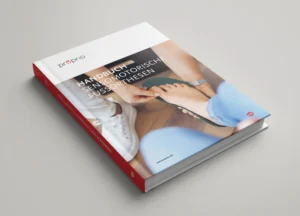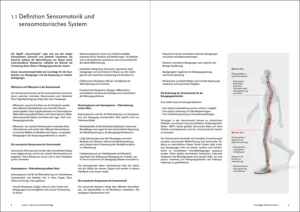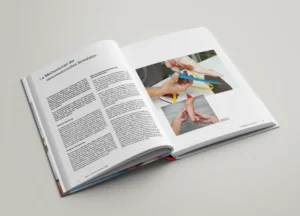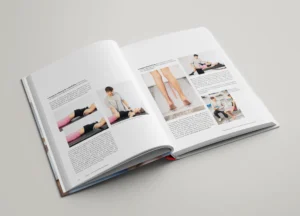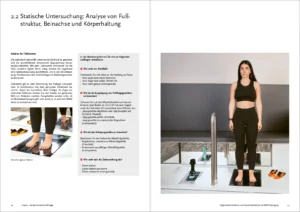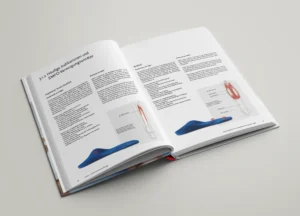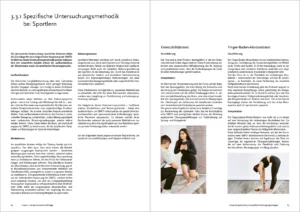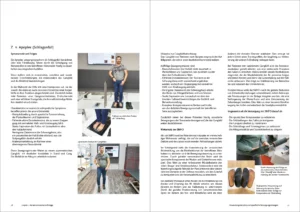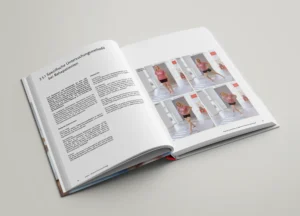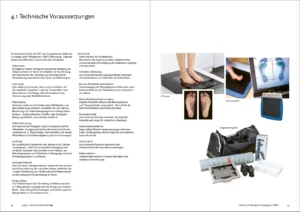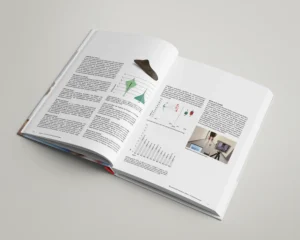
August 5, 2025
New handbook on sensorimotor care
From experience for practice
Well-founded knowledge, presented in an understandable way - the new standard work for orthopaedic tradespeople
What began decades ago with a few pioneers is now an integral part of modern orthopaedic care: the sensorimotor foot orthosis (SMFO) - synonymous with the previously used term sensorimotor foot orthosis.
Jeannette Arend, sensorimotor expert at Springer, and Dr. Steven Simon, sports scientist at RPTU Kaiserslautern, have pooled their many years of experience and expertise in a new handbook with the aim of presenting specialist knowledge in a practical and systematic way.
The result is a well-founded reference work with over 100 pages that offers both theoretical principles and specific recommendations for daily fitting practice. It is aimed at prosthetists and orthotists as well as orthopaedic shoemakers who work with sensorimotor fitting concepts - or would like to enter this field.
What you can expect in the book:
Chapter 1: Sensing is life - the basics of sensorimotor skills and SMFO
This chapter explains the neurophysiological and biomechanical principles of the sensorimotor foot orthosis. You will learn how stimulus processing, muscle tone and postural control are connected - and why the targeted activation of sensory systems can have a therapeutic effect.
Learning objectives:
- Understanding the basic concepts of sensorimotor function and the sensorimotor system
- Definition and differentiation of sensorimotor foot orthoses
- Knowledge of the principles of action and areas of application of SMFO
- Differentiation between sensorimotor and biomechanical foot orthoses
- Recognizing the mechanisms of sensorimotor stimulation
- Overview of the structure and structural elements of an SMFO
Chapter 2: From A to Toe - Diagnostic Procedures and Analysis Methodology for Targeted Care
Im zweiten Kapitel liegt der Fokus auf der strukturierten Anamnese, klinischen Untersuchung und Analyse von Gangbild und Haltung. Es zeigt Ihnen praxisnahe Methoden zur Erhebung relevanter Befunde und unterstützt Sie dabei, die Indikation für eine SMFO korrekt abzuleiten.
Learning objectives:
- Understanding the indication for SMFO
- Confident handling and structured application of analysis methods
- Criteria-based procedure for the evaluation of foot statics and dynamics
- Deriving key information from palpation for treatment
- Phase-appropriate interpretation of the gait pattern for insole fitting
- Derivation of the sensomotoric care consequences from the findings of the holistic analysis
Chapter 3: No two feet are the same - areas of application and specific treatment strategies - children, athletes, neurological, pain and rehabilitation patients
From children with developmental delays and patients who are active in sports to neurological diseases or chronic pain: this chapter shows you how to formulate differentiated care goals and implement indication-based SMFO concepts.
Learning objectives:
- Know the specific examination methods for different patient groups.
- Being able to identify common indications for SMFO
- Be able to name the differences between the care strategies for children, pain patients, athletes, neuropatients and rehabilitation patients
- Being able to make evidence-based decisions on the individual adaptation of SMFO
Chapter 4: Success through experience - recommendations for the successful implementation of SMFO in orthopaedic operations
This chapter provides practical recommendations on how the sensorimotor foot orthosis (SMFO) can be efficiently integrated into existing operating structures. It highlights technical requirements, sensible training concepts for the team, marketing approaches for positioning the fitting and digital tools for design. A checklist at the end of the chapter summarizes the most important success factors for structured implementation in everyday life.
Learning objectives:
- Differentiate technical aids for foot and gait analysis
- Identify differences and areas of application of the analysis methods
- Get to know suitable tools for the digital design or configuration of SMFO
- Recognizing the benefits of digital documentation systems
Chapter 5: The state of the art - evidence, literature and study references on SMFO
Which mechanisms of action are scientifically proven? Which indications are considered proven? This chapter provides you with the current study situation, relevant literature sources and argumentation aids for expert discussions or communication with payers.
Learning objectives:
- Understand the current scientific evidence for the clinical use and acceptance of SMFO
- Classify the results of relevant scientific studies on SMFO in a differentiated manner
- Clinically reflect on the significance of SMFO in the context of prevention and treatment of foot malpositions and musculoskeletal complaints
- Transferring the findings from scientific evidence into appropriate care practice
